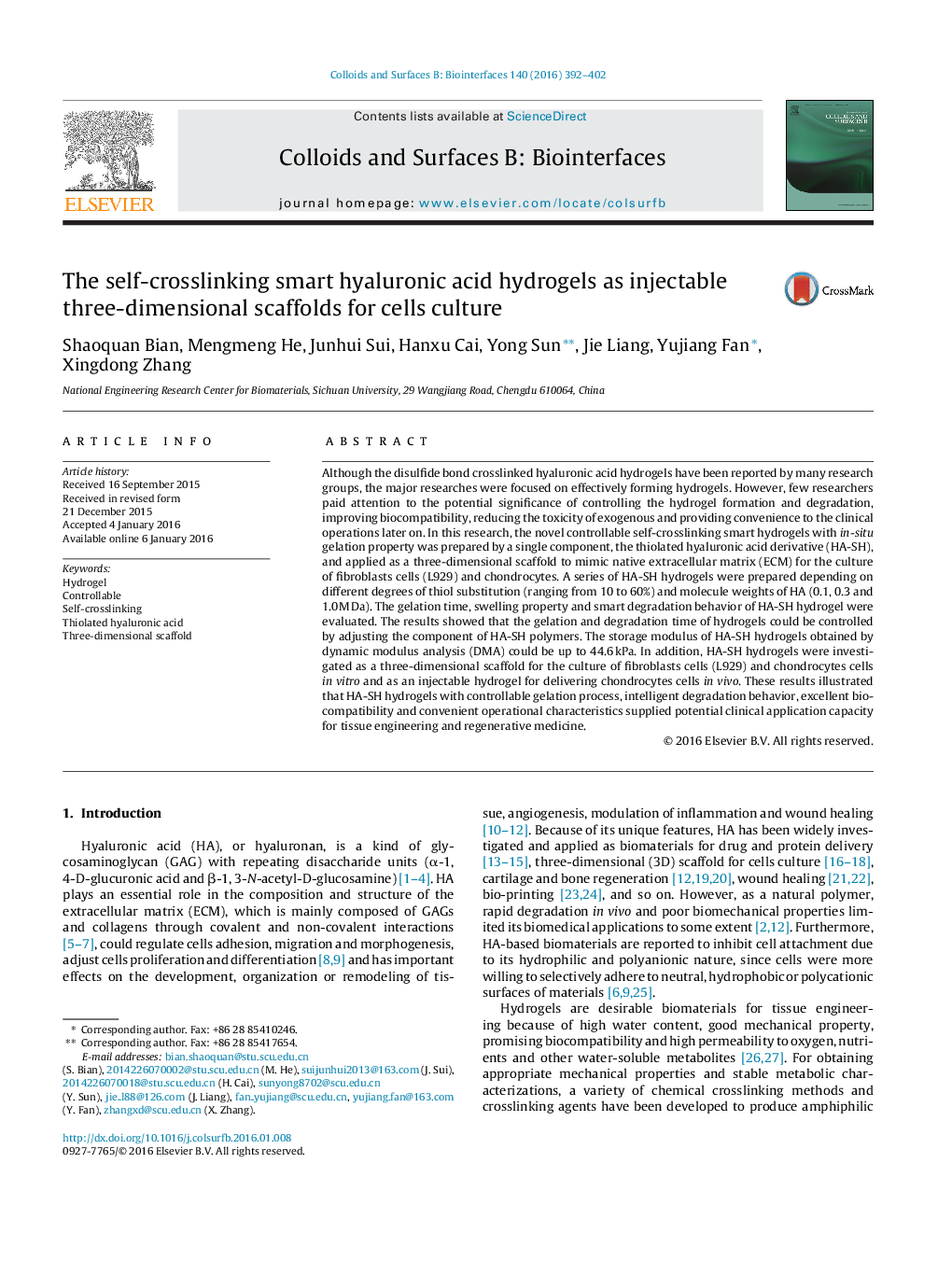| Article ID | Journal | Published Year | Pages | File Type |
|---|---|---|---|---|
| 599128 | Colloids and Surfaces B: Biointerfaces | 2016 | 11 Pages |
•Thiolated hyaluronic acid (HA-SH) hydrogel was obtained by a single component and formed by the self-crosslinking of two free thiol groups.•No chemical additives, cytotoxic crosslinking and byproducts were added and produced in experiment.•The gelation time, swelling property, mechanical property and intelligent degradation behavior of the hydrogel could be controlled.•The characterizations of controllable self-crosslinking HA-SH hydrogels has great potential to meet the requirement of biomaterials applied in different fields of biomedicine.
Although the disulfide bond crosslinked hyaluronic acid hydrogels have been reported by many research groups, the major researches were focused on effectively forming hydrogels. However, few researchers paid attention to the potential significance of controlling the hydrogel formation and degradation, improving biocompatibility, reducing the toxicity of exogenous and providing convenience to the clinical operations later on. In this research, the novel controllable self-crosslinking smart hydrogels with in-situ gelation property was prepared by a single component, the thiolated hyaluronic acid derivative (HA-SH), and applied as a three-dimensional scaffold to mimic native extracellular matrix (ECM) for the culture of fibroblasts cells (L929) and chondrocytes. A series of HA-SH hydrogels were prepared depending on different degrees of thiol substitution (ranging from 10 to 60%) and molecule weights of HA (0.1, 0.3 and 1.0M Da). The gelation time, swelling property and smart degradation behavior of HA-SH hydrogel were evaluated. The results showed that the gelation and degradation time of hydrogels could be controlled by adjusting the component of HA-SH polymers. The storage modulus of HA-SH hydrogels obtained by dynamic modulus analysis (DMA) could be up to 44.6 kPa. In addition, HA-SH hydrogels were investigated as a three-dimensional scaffold for the culture of fibroblasts cells (L929) and chondrocytes cells in vitro and as an injectable hydrogel for delivering chondrocytes cells in vivo. These results illustrated that HA-SH hydrogels with controllable gelation process, intelligent degradation behavior, excellent biocompatibility and convenient operational characteristics supplied potential clinical application capacity for tissue engineering and regenerative medicine.
Graphical abstractFigure optionsDownload full-size imageDownload as PowerPoint slide
